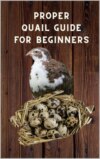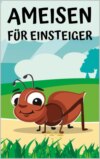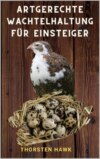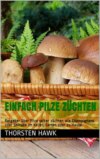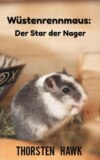Читать книгу: «Proper Quail Guide for Beginners», страница 2
There are also clearly visible differences with regard to the plumage color: While the female harlequin quail show up in quite inconspicuous brown tones, the males show stronger red-brown contrasts and more color variants as well as an additional black-and-white coloring in the area of the head and Throat. Other wild quails are crested quail, francolin quail and Tasmanian quail (again, there are of course many more species to list).
The last, but perhaps also the most interesting group in this chapter is that of the laying quail. Ultimately, only one type of quail is suitable for this purpose: the Japanese quail or Japanese laying quail. Although this species has always been kept as an ornamental quail, the focus today is on the production of quail eggs, i.e. keeping them for laying purposes. The Japanese quail species belongs to the pheasant-like family, grows up to 20 cm in size and comes in many different colors. Each color can in turn be bred into one of three lines, with each breed line affecting the weight and egg production of the quail:
The light breeding line weighs 100 to 150 grams and lays eggs well. Members of the medium-heavy line weigh 160 to 250 grams with a very good laying performance. The heavy breeding line is characterized by a good laying performance and reaches a weight of 300 to 500 grams. Despite the excellent laying performance of the Japanese quail and the associated predominant use as laying quail, a trend away from laying performance and back to ornamental husbandry has been discernible for several years. Last but not least, this is due to the wealth of variants in the plumage colouration.
2. Origin
In Europe, the quail is the smallest representative of the order Galliformes. However, it is still a very young resident: the quail has only been native to European countries since the 1950s. The origins of the quail are in Asia, especially in Japan and China. Here it was kept as an ornament, as a songbird and as a laying quail as early as the 11th century. Today the quail is widespread in Africa, Asia and the European continent. Being a migratory bird, most quail spend the winter in warm North African countries, as well as India and Palestine, before returning to Asia and Europe in the spring and summer.
3. Natural Habitat
The quail prefers open meadows, fields and arable land with a high herb layer in which they can hide if necessary. This plays a role for the quail insofar as they like to live in secret. The soil should be dry to slightly moist. In addition, the quail needs an adequate amount of sun, as well as opportunities to be able to bathe in dust. For several years we have been experiencing a decline in quail populations in many European countries. The reasons for this lie on the one hand in hunting, on the other hand in the destruction of the habitat through modern forms of agriculture with monocultures, pesticides and fertilizers. At least in Germany, the persecution of the quail is no longer the reason for the declining numbers, because it has not been allowed to hunt them here for several years. In the wild, the quail feeds on smaller insects, seeds and grains, and herbs and grasses. Here it lives up to an average of 3 years, but can live up to 5 years as a breeder or layer.
4. Behavior
A loud, rhythmic call that can be heard very far is characteristic of the male animals. The vocalizations of female quail, on the other hand, sound more like a softer croaking or cooing. Breeding quails should be kept active, pecking, moving and pacing. Healthy quail also bathe in the sand and scratch at the ground. A soft squeaking sound can be heard from time to time, feeding should be frequent and regular.
In general, quail are particularly active during twilight in the morning and evening, especially during the mating season. In accordance with their natural habitat, quail breed mainly in dry meadows or on grain fields. The nature of the quail is polygamous.
In practice, this means that mate-ready females seek out the males, with each male then mating with any female quail that has visited and attracted them. However, not only do the males mate with several females, but female quail also court different males at the same time. This can then lead to the male quail fighting among themselves.
In the wild, the quail's nest will be a slight depression in the ground, which the female decorates with small twigs, leaves and other (green) plant parts. In general, one brood per year can be assumed, occasionally a second brood is reared. The breeding season is usually between May and July in most European countries, although deviations from this period can occur. After the clutch is complete with around seven to twelve eggs, the female takes on the brood. The eggs usually weigh between ten and twelve grams and are accordingly significantly smaller than a hen's egg. The pear-like shape, on the other hand, is very similar to this one. Characteristic of the quail egg is the red-brownish to black speckles on a shiny, smooth shell.
The exact arrangement and size of the speckles is very individual and also varies in terms of their specific color. After almost three weeks of incubation, the quail offspring hatch: Since the chicks are precocial, they leave the nest quickly and go on a discovery tour alongside the mother quail. After just under two weeks, the young animals can already flap, after about another week they have learned to fly.
Бесплатный фрагмент закончился.
Начислим
+8
Покупайте книги и получайте бонусы в Литрес, Читай-городе и Буквоеде.
Участвовать в бонусной программе
